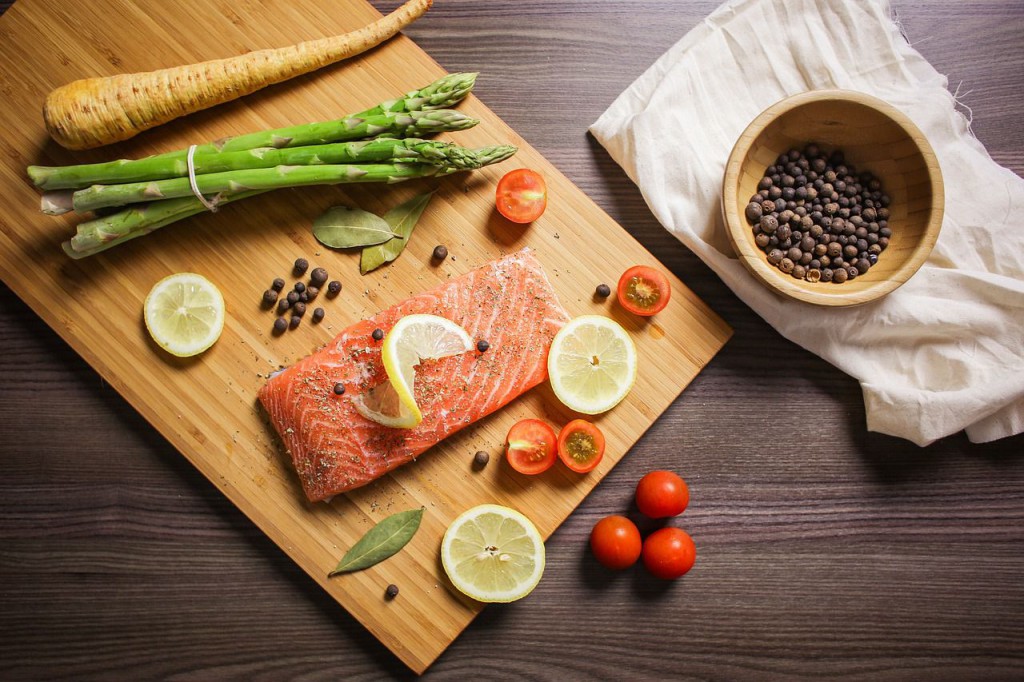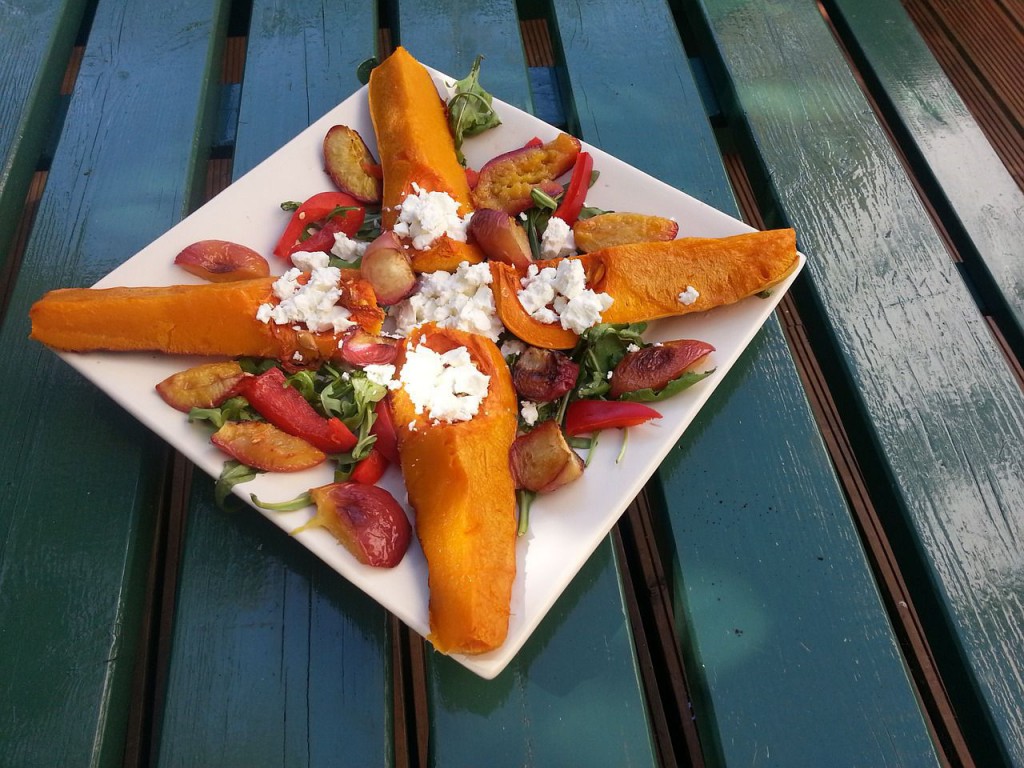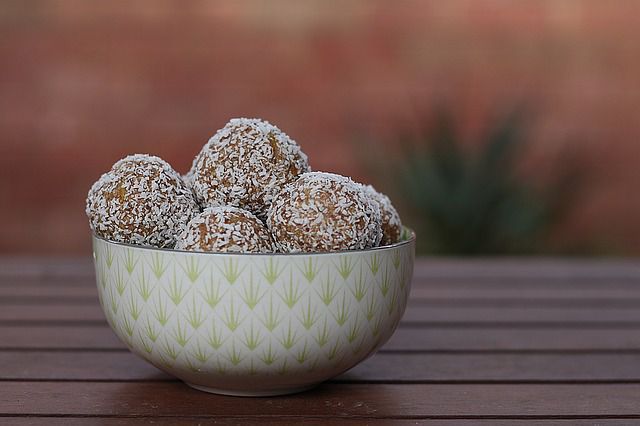
This article is the last in a four-part series on starting a whole foods diet – what are whole foods, a list of whole foods, tips to simplify shopping for them, and how to make eating them exiting so you’ll want to stick with it. By identifying what whole foods are, we can begin to see the relationship between them and our bodies, and how they affect our overall wellness.
1 – Starting a Whole Foods Diet: What are Whole Foods?
2 – Starting a Whole Foods Diet: List of Whole Foods
3 – Starting a Whole Foods Diet: Tips to Simplify Shopping
4 – Starting a Whole Foods Diet: How to Stick With it
After learning what whole foods are and seeing the list and tips to simplify shopping for them, hopefully you’re fired up to get going! On the other hand, if you’re wondering if eating this way will be boring, or hard to stick with, today we’ll go over some tips and suggestions on how to make healthy eating exciting and stick with it.
We all know how it is, many of us are all gung ho when we start something new and then as time goes on we start to get bored or slack on our efforts – suddenly maintaining what we were so excited about in the beginning becomes too much work, and we lose the motivation to stick with it. This is typical with so many things in life, but particularly when it comes to nutrition, exercise, or self care in general.
The fact is we’re human, we slip up, so it doesn’t help to get down on ourselves when this happens. What is helpful is to recognize we slipped up, accept it, love ourselves anyway, and get back up and start again. The key in making sustainable dietary changes that stick is to aim for progress, not perfection.
So far this series has equipped you with a solid foundation of what whole foods are, how they have the ability to transform your health, which particular foods make the list, and tips to make you a master shopper, the last piece of the puzzle is how to stick with the changes and make the switch to a whole foods diet a permanent way life. So, onward we go!
Keep it Exciting
If you think eating whole foods is about living off unseasoned chicken breast and steamed broccoli everyday, I can assure you that is not how we roll around here. This may work for body builders, which most of us are not. I’m talking about a variety of whole foods with delicious flavors, I’m talking mixing things up and trying new things so that eating becomes exciting and something you look forward to.

Try a New Veggie Each Week, or a Different Preparation
An easy way to mix things up a bit is to try a new veggie each week, or if you normally eat cauliflower steamed – try cauliflower mash instead. I recommend trying new recipes regularly, it’s one of my favorite things to do, and one of the best ways to make eating real food a fun experience. Peruse whole food recipes online – there are a ton to try! Need some suggestions? Check out my recipes here, and if you try something I’d love to hear about it :)
Have Fun With Herbs and Seasonings
I mentioned seasonings earlier in the series and I can’t stress enough the huge misunderstanding that healthy food is boring and tasteless. There are so many ways to season whole foods, the addition of fresh herbs and dried spices not only makes food more delicious, but can add nutritional value too. Here’s a list of things I regularly keep on hand to season my food with, and since they’re staples/pantry items I only need to stock up once in awhile.
- Himalayan salt
- Fresh herbs like parsley, cilantro, basil, oregano and thyme
- Fresh garlic and ginger
- Dried spices like turmeric, ginger, cinnamon, cumin, cayenne, coriander and curry
- Bragg organic 24 herb seasoning, gomasio, herbamare and nutritional yeast
- Liquids like coconut aminos, tamari, Bragg liquid aminos and apple cider vinegar, coconut vinegar, brown rice vinegar and mirin
- Coconut milk

Ideas for Awesome Snack Swaps
If you’re a snacker, or you need healthy snack options for your kids, I’ve got you covered. For snacks that don’t require preparation, keep healthy fruits and veggies like carrots, celery sticks, cucumber or zucchini slices, nuts, seeds, hard-boiled eggs, hummus, guacamole, and nut butters on hand for grab-n-go snacks.
Homemade trail mix, granola and energy bars make awesome snacks. Kale chips satisfy cravings for chips or salty snacks. Nut butters make yummy energy bites, balls or nuggets (get my snack recipes here). And if you’re in the mood for something sweet try my healthy dark chocolate pudding, or vanilla chai spiced chia pudding (recipes here).
Swap packaged juices from concentrate for fresh organic juices and smoothies, kefir water, kombucha, or flavored stevia in sparkling mineral water for soda. You can make a simple soda by combining 1 cup sparkling mineral water, 1 tsp apple cider vinegar, and the juice of 1/2 a lemon – which is really great for digestion.
While the packaged snack options you find in natural foods stores may be healthier, you still have to check ingredients. Because they are a commonly consumed item, I did a full review on protein bars with smart ingredients, you may want to check it out! In the end, a bag of Kettle chips is a way better option than a bag of Doritos, and moderation goes a long way.

Want a variety of organic and non-GMO snacks delivered straight to your door monthly? Simplify your life, save precious time, and stay on track with your whole foods lifestyle. Discover the GMO Free Snack Box – UrthBox.
Deciding Which Things May Not Be Worth the Time to Make
Since eating a whole foods diet is about preparing fresh homemade foods from scratch, it’s important to try and not take on so much (especially in the beginning) that you become stressed, because then you won’t stick with it. For example, I love almond butter and eat it regularly so for me it makes sense to save money and make my own, but although we keep almond milk in the house all the time, I don’t drink it and really just use it here and there in recipes so it’s not something I’d like to spend time making, and choose to buy it instead.
Before I changed my eating habits, crunchy salty chips and crackers were my thing, so for me it’s worth it to make a batch of kale chips or almond flour crackers for a fraction of what they cost, and I know that there’s literally two to three ingredients in them which makes me even happier when I satisfy my cravings with them. You get the picture.
There are so many things you can make from scratch, from seasoning mixes, salad dressings, energy bars, nut butters, fermented foods, and more – I recommend you sit down and make a list of what you’re willing to set aside time for making and scratch off what might not be worth it.
Another side of this is, even if you don’t want to make something every time, experimenting with making almond butter once, or anything else for that matter, can be a really fun part of keeping things exciting. So I recommend it as part of trying something new.
Meal Prep and Meal Planning
I guarantee you – setting aside time at least once a week, twice if you can, for meal prep, is one of your biggest allies when it comes to sticking with eating whole foods. It’s different for everyone, so find a day that works best for you – Sundays are a good day to prep for the rest of the week, with the addition of Wednesdays, if you’re doing two days. You only need about a hour and you can about this in different ways.
Either you can cook and portion out individual meals for a few days, or prep and chop things like veggies, make a pot of quinoa, etc., to have on hand to throw meals and snacks together quickly. The first option works well for one or two people in the house, and the second may work better for families. Here are two videos, showing each method so you can choose what works best for you. When your fridge is loaded with convenient healthy meals, it almost guarantees you will eat them.
I find this works well for breakfast and lunches and then use a meal planner to automatically select and schedule my dinners, based on my preferences, and generate a weekly shopping list to save time and keep me on track.
Ultimately, you have to find what works best for you and your family, but hopefully these suggestions help!
And you can click here or here for a couple of meal prep videos you might find helpful.
Ditch Fast Food
I recommend ditching fast food, not only will you feel better but it’ll save you money. It’s easy to spend an average of fifteen dollars or more on a fast food meal for just two people, and over thirty for a family of four. That same amount spent on whole foods will feed your family multiple, and much more satisfying meals. At my local grocer I can get at least five beautiful bunches of kale for the same cost of a single cup of Starbucks coffee. That’s a lot of kale, which addresses the common concern that eating whole foods is expensive – it can be done on any budget.
Cut Out Processed Sugars
One thing that is really good at sabotaging our efforts to eat well is sugar. Processed sugars and artificial sweeteners are in everything. Most people know to watch out for high fructose corn syrup in the ingredients but there are so many disguises for sugar you may not even realize it’s in there. Processed sugars make you crave more sugar and more processed foods. I recommend using honey, maple syrup, dates, coconut sugar and coconut nectar as sweeteners, instead. Desserts made with these sweeteners are pretty incredible and won’t leave you feeling low after the initial “sugar buzz” like highly processed sweets do.

You Got This! I Believe in You
You did it! You made it through the entire four-part series on Starting a Whole Foods Diet. You’re well on your way to becoming a whole foodie! I hope you enjoyed this series as much as I enjoyed creating it for you. I hope you remember how much small changes can make a huge difference when it comes to your wellness and don’t forget to celebrate your successes, no matter how big or small.
Be gentle with yourself as you experiment with new foods and keep an open mind, you won’t like everything you try but you’ll discover some amazing foods you’ll come to love.
If you fall, no problem – it’s a journey, just get back up and try again. Chances are, when you start to experience how great your body feels and how clear your mind is, you’ll come back for more.
Over time, like any habit – if you choose, eating whole foods will become second nature and a mainstay in yours and your families lives. There is no greater gift you could give to yourself and your family than ultimate wellness!
I will not feel deprived when I bypass junk food. I will feel empowered because I made the right choice.
behappy.me
For my favorite meal planning resources that offer smart and stress-free solutions to get delicious real food on the table for you and your family, check out my meal plans page.
If you have any questions or comments, please leave them below – I’m more than happy to help!

Hi Jess!
Love this article on whole foods. I have pretty severe IBS with malabsorption, and so working with my diet has become essential for me over the years.
My family sometimes jokes about the meals that I prepare, but as you said in the article, they are often pleasantly surprised when the meals are varied and tasty.
My biggest problem with the whole foods is that I cannot digest insoluable fiber very well at all, so I struggle with getting enough fiber. Whole grains are out completely, but I do fairly well with fruits and vegetables. For grains I often resort to organic white flour.
Have you seen this problem with other people?
Thanks, Stella
Hey thanks Stella! Glad you enjoyed it, please share it with anyone you know who could benefit from it! While this series on starting a whole foods diet is a general guide, certain health conditions such as yours need to be approached a bit differently. It sounds like you have figured out which foods can cause a flare up or control your IBS symptoms, no doubt with much trial and error, which isn’t easy – so great job. I’m glad you shared this because it shows that while some whole foods work in this instance, not all do. Which is why it’s important to find what works for us individually.
IBS can be so tricky since it can either cause constipation or diarrhea, or both. For the sake of other readers who may be wondering, soluble fiber can be helpful if you suffer from diarrhea and insoluble fiber can be helpful for constipation.
So back to your point and question, most definitely I’ve seen people with IBS have trouble digesting insoluble fiber, particularly when dealing with too loose and frequent movements. Gluten is extremely inflammatory to the digestive tract which is why wheat and many whole grains are bothersome. The great thing is you’ve figured out what works for you, and it sounds like you’re on the right track. Some suggestions would be to try quality sourdough and gluten free grains like quinoa. I have a post on ancient grains (gluten free) here. Juicing will allow your body to absorb nutrients without having to digest the fiber. I love my juicer! Here’s a really helpful post on foods low in FODMAPs which is proving to be helpful for people with IBS. Of course, when introducing any new foods you want to do so slowly and one at a time, as sometimes a combination can be overwhelming to the digestive system. Hope this helps :)